Don't wanna be here? Send us removal request.
Text
Assignment 4- ( draft 1) : Radha Mistry
Radha Mistry is a designer and researcher specializing in architecture, narrative environments, and strategic foresight.
Her work emphasizes creating equitable and inclusive futures, ensuring diverse communities are represented in future visions.

The accompanying image features Radha Mistry, reflecting her role as a thought leader in design and foresight. Her confident demeanor and professional attire underscore her expertise and commitment to exploring future possibilities.
Her work explores the intersection of design, emerging technologies, and the future of human experiences. She is particularly focused on how technological advances will shape our built environments, daily lives, and societal structures.
Her work stands out for its human-centered focus, her ability to fuse technology with emotional and social considerations, and her commitment to creating a future that is both inclusive and sustainable.
0 notes
Text
Assignment 4- ( draft 1) : Anab Jain
Anab Jain is the co-founder of Superflux, a design and experiential futures company that explores the implications of emerging technologies on society and culture.

Project Highlight: Invocation for Hope
"Invocation for Hope" is an immersive artwork by Superflux that imagines a future where people live peacefully with nature. The installation uses a calm, nature-filled setting to make people think about environmental problems and how humans affect the planet.
Photo Description:
The image shows a peaceful scene with lots of greenery and natural features. It beautifully combines human-made and natural elements, symbolizing the balance between people and nature that the project envisions, inspiring thoughts about a better, sustainable future.
Anab Jain's work stands out because of her ability to blend speculative design with tangible, immersive experiences that challenge our understanding of the future. Her projects are not just about imagining possibilities; they provoke deep thought, often by making potential futures emotionally and visually accessible to people today.
0 notes
Text
Assignment 4 (Draft 1)- Cards 1; inclass
Gun like thing, Innovative, cancel undo
The Cure Cannon
In the year 2074, Dr. Aryan Mehta invented the Cure Cannon, a device that looked like a futuristic gun but worked like an old vacuum cleaner. Instead of cleaning dust, it could undo diseases.
Using special energy pulses, the Cure Cannon reversed the effects of illnesses, restoring people to how they were before getting sick. During a deadly virus outbreak in New Delhi, Dr. Aryan used the device to save thousands. Patients instantly recovered, as if their sickness had been erased.
The Cure Cannon became a symbol of hope, showing how even simple ideas could change the world.
0 notes
Text
Exercise 5 : Final Draft
Object : Dupatta , Object : Vehicle Thing , Action :Tokenise , Attribute : Collaborative , Archetype : Breakfast .

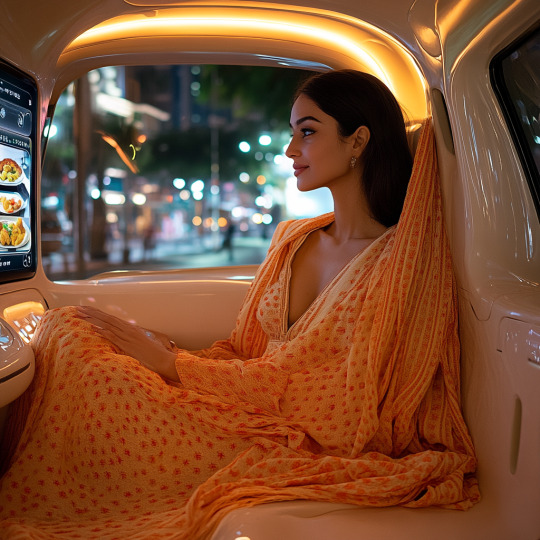
In 2032, Meera’s morning routine had evolved. Instead of sitting at a dining table, she now enjoyed breakfast in her self-driving vehicle. The car transformed into a cozy café, with a fridge stocked with fresh ingredients and a screen offering personalized meal suggestions. Today, it was making a fusion of parathas and pancakes, a mix she hadn’t thought of before.
As she wrapped her smart dupatta around her shoulders, a message from Aryan popped up. He, too, was having breakfast in his vehicle. They had grown up together, but life had taken them to different cities, and these virtual breakfast meetings had become a cherished routine. Through the car’s holographic display, they connected, sharing their meal and catching up as the world outside rushed by.
In that moment, with the city skyline passing in the background, Meera realized how much had changed over the years. The distance between her and Aryan didn’t feel as wide when they shared these quiet, yet meaningful moments together. She smiled, grateful for the technology that kept their bond strong, even when life had taken them in different directions. It wasn’t just about the breakfast—it was about the little moments of connection that reminded her how important their friendship still was.
0 notes
Text
Exercise 5 : Draft 1
Object : Dupatta , Object : Vehicle Thing , Action : Tokenise , Attribute : Collaborative , Archetype : Breakfast .
"A Perfect Blend"

It was a warm morning in 2028, and Priya, a young professional in Delhi, was on her way to meet her friend Sameer for breakfast. She wore a bright dupatta over her kurta, the soft fabric adding a touch of elegance to her casual outfit. The dupatta was simple but stylish, a blend of tradition and modernity, just like the city itself.


Sameer had suggested they try a new café that had recently introduced a "collaborative breakfast" feature. The café’s app allowed customers to choose ingredients they liked, and the system would combine their selections into a personalized dish. Priya decided on a traditional masala chai and crispy paratha, while Sameer went for a healthy smoothie bowl with oats and fruits. The app mixed their choices, creating a unique dish—a chai-spiced smoothie topped with crunchy paratha bits.
As Priya climbed into an eco-friendly vehicle to meet Sameer, her dupatta fluttered gently in the breeze. The self-driving vehicle smoothly navigated through the city, and she enjoyed the brief moment of peace before their busy day began. It was a morning that felt both familiar and new—her traditional dupatta and a tech-savvy breakfast app making her routine just a little bit more special.
0 notes
Text
Exercise 4 : Final Draft
Draft 2 : Object - VP Headset , Attribute - psychoactive, Action - patrol , Archetype -Menu

In the near future, Officer Aarav Deshmukh patrols the busy streets of a growing city with the help of a VP Headset. The headset, with its psychoactive attribute, enhances his senses and cognition, allowing him to detect threats and interact with the digital world through a mental menu.
One evening, during his patrol, the headset alerts him to a hidden drug deal at a café. With a simple thought, Aarav selects the "Patrol" option from the virtual menu and is directed to a concealed door at the back of the café. His focus sharpens, and backup arrives quickly through the system. Thanks to the headset’s capabilities, Aarav stops the crime, making the city safer for tonight.

1 note
·
View note
Text
Exercise 4 : Cards 1
Draft 1 : Object - VP Headset , Attribute - psychoactive, Action - patrol , Archetype -Menu .
The Midnight Patrol

In 2035, Alex, a 30-year-old engineer, couldn’t sleep because of stress from work. One night, he decided to try the VP Headset, a gadget designed to calm the mind by scanning your thoughts.
He put on the headset and clicked on Patrol Mode in its simple menu. The headset hummed softly, and Alex saw a peaceful forest in his mind. As it explored his thoughts, it found his biggest worry: the fear of failure.

“Do you want to change how you feel about this?” the menu asked. Alex pressed "Yes." Suddenly, the forest turned into a calming sunrise. The device helped him see his small wins and let go of his fear. For the first time in months, Alex fell into a deep, peaceful sleep.
The next day, he felt refreshed. The VP Headset didn’t just help him sleep—it gave him a new way to handle stress.
0 notes
Text
Exrecise 3 : Final Draft
Headline: Humanity 2104 – What We’ll Look Like and Why It All Starts Today

- Food- Food shortages are a problem, but scientists are creating lab-grown foods packed with nutrients. By 2104, these foods will be made just for you, based on your health needs. This means future humans will be fitter and stronger, eating meals that help them stay healthy and active.
- Water: In today's world water scarcity is real. Scientists are inventing biofilters for purification of water.By 2104, the water intake of humans would be less. There would be water capsules which last for longer duration and give all minerals from the capsule. Humans would adapt to a dry environment and be more active than today.
- Housing : As generation are evolving the structure of the house are becoming smaller, adaptable, and highly efficient. .By 2104 , humans can personalize and can migrate the house from one location to another. Humans will become more agile and are ready to live in different atmospheres.
- Education: As Artificial Intelligence is growing in education field and humans are very dependent on Ai and the quality of work is improving . By 2104 there will be memory chips where you can remember things for a longer duration . Humans by 2104 will have long lasting memories.
- Healthcare: In today’s world , many diseases are coming up and scientist are researching on it and creating medicines for the diseases.Human are very cautious of their health nowadays. By 2104 Imagine a world where getting sick is rare. Future humans may have bodies built to resist diseases, heal faster, and stay healthy longer. Instead of waiting for illnesses to strike, our genes might be adjusted to keep us resilient from the start.
- Social Equity : Current world not everyone has access to good food, healthcare, or education. This leads to differences in health, growth, and life expectancy.By 2104 everyone will get fair opportunities, future humans could be taller, healthier, and live longer. Without change, these gaps could become even more obvious in how people look and live.
- Gender Equality : Nowadays government has started many rules for girls education and nowadays girls are also employed . There are some professions where women can not pursue and there are some where men can not pursue . By 2104, all genders can pursue all professions . There would be no conflicts on gender equality .no one would be unemployed.
- Work & Income: Today Long hours and tech-heavy jobs lead to less physical activity, poor posture, and eye strain.By 2104 with more development, humans might become less muscular but better at using technology. Augmented body parts or tools could help improve physical strength or stamina.
- Electricity : Today many lack access to reliable electricity, while pollution from fossil fuels harms health. By 2104 clean energy could improve health, reduce pollution.
- Peace & Justice: Currently, wars and injustice hurt people physically and mentally, forcing many to live in poor conditions.By 2104 , we would be mentally and physically so fit and strong we can heal very quickly from every situation.
- Transportation : Today traffic, pollution, and sitting for long hours harm our health, causing stress and inactivity. By 2104 faster transportation with no carbon dioxide could improve lung health and keep people active. But if we don’t change, humans might become less physically fit and more prone to health issues.
- Political Voice: Nowadays,many people don’t have a right to take decisions, which leads to unequal access to resources like food and healthcare. By 2104, If everyone gets an equal voice, resources could be shared more fairly, making humans healthier and stronger.
- Air Pollution: Nowadays,bad air is damaging lungs, reducing immunity, and causing health problems, especially in cities.By 2104 If pollution continues, humans might develop larger lungs or adapt to handle poor air and lungs can purify it and save from disease.
- Noise Pollution:Currently constant city noise is harming our hearing, focus, and mental health. By 2104, humans could adapt with better hearing filters or implants to manage sound.
- Non-Human life:Nowadays, Losing animals and plants harms the environment and reduces access to natural resources like food and medicine. By 2104 there would be a decrease in wildlife and plants . The Human body will be adapted to an artificial environment .
- Chemical Pollution : In recent world, chemicals in our air, water, and food harm our health, affecting fertility and immunity.By 2104, humans will have many injections or capsules that can prevent from chemical pollution.
- Water bodies & Supply: Today pollution and water shortages make clean drinking water hard to find in many places.By 2104 , Clean water would help future humans grow stronger and avoid diseases.
- Waste management : Today: Poor handling of garbage spreads diseases and pollutes cities.By 2104, Better waste systems could prevent diseases and keep people healthy. Humans would be more conscious about cleanliness.
- Land use & Streets & Public Spaces :

Today: Overcrowded cities with fewer green spaces cause stress and inactivity. By 2104 , the streets would be smaller and public spaces would be very less . People would be mostly working from home . There would be meeting spots to chill out .AR VR would be incorporated to enhance the experience . Humans would be a little fatigue .
- Ocean pollution : Today , plastic waste and chemicals harm marine life and make seafood toxic.By 2104 , Cleaner oceans could provide healthier food, improving human growth and immunity. If pollution increases, humans might adapt to filter toxins but could face long-term health problems.
- Effects of climate change : Today , rising temperatures and extreme weather are making life harder, especially in hot climates. By 2104,People might develop darker skin globally to protect against stronger sunlight and leaner bodies to cope with heat. In colder areas, humans might adapt with better natural insulation or thicker body fat.
- Urban Agriculture & Greenification : Today many people rely on unhealthy processed food, leading to weaker bodies and poor health. By 2104 , there will be technology coming where it will create healthier food where there are all nutrients , proteins in the food.
- Gender & Sexuality: Today people are exploring their identities, but many still face judgment or barriers. Technology is helping people align their physical traits with who they are.By 2104 Society could fully embrace gender fluidity, and humans might use technology to easily change their appearance, voice, or body to match their identity. This would lead to happier and healthier individuals.
- Diversity & Inclusion: Currently, societies are becoming more inclusive, but biases still limit opportunities for many. By 2104 a truly inclusive world would create a stronger, healthier human population.
- Accessibility:Currently , we are updated with everything through internet . We have everything accessible . By 2104, we do not need to search for information. Humans brain will be so updated where you will be able to access every information.
- Sustainability : Today, we waste resources and harm the planet, leaving future generations with fewer natural options. By 2104, we adopt sustainable practices, humans could live in harmony with nature, becoming stronger and healthier. Without this, people might depend on artificial solutions for survival, which could change how we look and function.
0 notes
Text
Exercise 2 : Final Draft
The Compass of Hope

In the year 2184, the world is a wasteland. Once-great cities like Mugrond are now broken and empty, with only the ruins of buildings and streets filled with dust. Lina, a 12-year-old girl, leads a small group of survivors known as the Wanderers. They are a group of children, forced to survive on their own after the world fell apart. They use old hoverboards to travel through the crumbling city, always staying hidden from dangers.
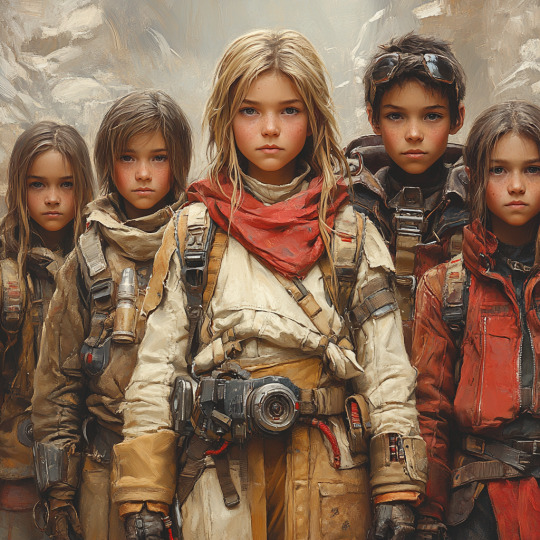
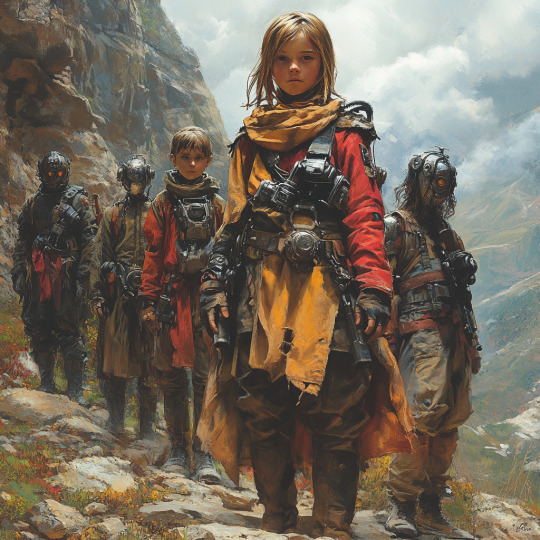
The biggest threat to the Wanderers is a group called the Steelborn. These are children like Lina, but they have been altered by dangerous technology. Their bodies are enhanced with metal parts, making them stronger and faster. The Steelborn are cruel and hunt down other children to force them into joining their group. Lina and the Wanderers must stay hidden to avoid being captured.

Lina’s only hope is an old compass, a family heirloom that once belonged to her great-grandfather. This compass doesn’t point north but instead leads them to a place called Sanctus Peak, where it’s said life still thrives. The compass is the last piece of hope the Wanderers have, and Lina tightly holds onto it as they search for safety.
One night, while hiding in an old subway station, the Steelborn find them. The group is trapped, and fear begins to spread. But just as they are about to give up, the compass starts to glow, pointing to a secret passage in the tunnel. They follow the light, escaping just in time.


They discover a hidden bunker, stocked with food, water, and supplies. It’s not the perfect place, but it’s a safe haven for now. Lina knows that the Steelborn will continue to search for them, but with the compass in hand, she is determined to keep her group safe. The Wanderers will keep moving forward, hoping for a better future.
0 notes
Text
Exercise 1 ( Final Draft )
The Empowering Dupatta: A Blend of Tradition and Safety
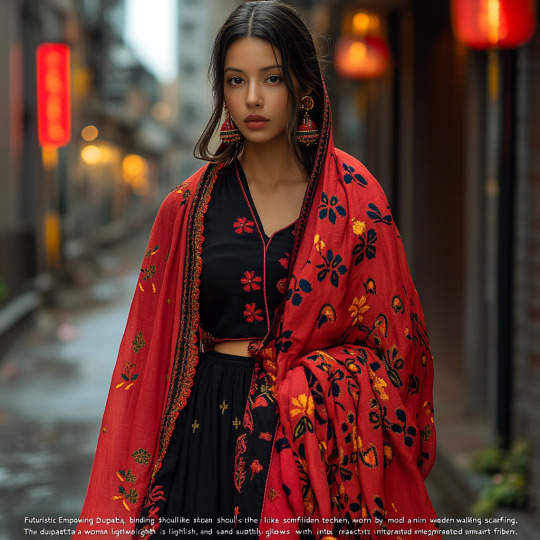
By 2104, the Empowering Dupatta has become a game-changer for women around the world. This lightweight, beautifully crafted dupatta combines India’s traditional designs with modern technology to provide both style and protection.
In the future, this dupatta will be an essential item for every woman. It has smart fibers that can sense the wearer’s emotions. If the woman feels scared or uneasy, the dupatta alerts her with a gentle vibration. In more dangerous situations, like someone following her or an attack, the dupatta activates its safety features. It can release pepper spray to stop an attacker and protect itself from acid, keeping the woman safe.
The dupatta remains lightweight and stylish, easily matching any outfit. By 2104, crime rates like acid attacks and harassment have decreased significantly. Women can now walk confidently at night, knowing they have a powerful ally with them.
This isn’t just a piece of clothing—it’s a symbol of strength and independence. The Empowering Dupatta has changed the way women move through the world, giving them the freedom to live without fear. It’s a step toward a safer and more equal future for everyone.

#Speculative
0 notes
Text
Exercise 1 ( Draft 2)
Asha’s Dupatta: Tradition Woven with Protection

In 2104, under the warm glow of streetlights, Asha walked through the bustling market, her dupatta draped elegantly over her shoulders. It swayed lightly with her steps, its intricate embroidery catching the light. To passersby, it seemed like any other scarf—a beautiful accessory rooted in tradition. But Asha knew it was far more than that.
Her brother, an engineer, had designed this dupatta with smart fibers and discreet technology, blending practicality with culture. It could respond to her body’s signals—adapting to her needs without losing its graceful charm.
As she navigated the crowd, Asha felt uneasy. A man had been following her for several minutes. Her heart rate quickened, and the dupatta picked up on the subtle change. The fabric tightened slightly across her shoulders, a silent reassurance that it was ready to act.
She turned down a quieter street, but the man followed. Her fingers brushed a hidden clasp at the edge of the dupatta, activating its first defense. The edges stiffened, forming a subtle barrier across her upper body. Asha kept walking, but her senses were sharp.
When the man came closer, she turned abruptly. With a flick of her wrist, the dupatta’s edge released a quick burst of light, disorienting him. He stumbled back, startled. Taking advantage of the moment, Asha slipped back into the crowded market, weaving through the stalls until she felt safe again.
Moments later, the dupatta softened, its defenses deactivated. It was once again just a beautiful piece of cloth draped around her, blending effortlessly with the lively market scene.
For Asha, it wasn’t just a scarf—it was her silent protector, her trusted ally in a world that often felt unpredictable. Tradition and innovation had come together to create something truly empowering.
Wouldn’t you want one too?
#Speculative
0 notes
Text
CARDS ( Draft 1 )

Build the story with the teammate Yuvika
In a high-security military institution, agents were unraveling a terror plot involving a powerful politician. Crucial evidence was stored in NeuroLens, an advanced pair of glasses capable of overlaying AR visuals of classified data.
One agent had risked everything to retrieve the glasses, but a critical glitch rendered them useless. The team quickly realized the issue: a missing power ticket—a unique, battery-like key required to activate the AR interface.
The ticket, however, wasn’t with them. It had been entrusted to an anonymous informant for safety. Now, the institution was racing against time to locate this unknown figure, their mission hinging on a person who might hold the key to stopping the plot—and exposing the truth.
The clock ticked as whispers of betrayal and trust filled the air. Would they find the informant in time? Or would the plot remain hidden in plain sight?
#Speculative #archetype
0 notes
Text
NFL CARDS ( In class )
Title: “Funny Flying Birds”
In Aviana, birds were used for travel. They could talk and had funny stickers on their feathers.
One day, Pelly the Pelican wobbled in the air. “Diagnosing… my beak is cracked! Too much heavy stuff again. I’m a bird, not a truck!” Its wings showed a sticker: “OVERLOADED, NOT OVERJOYED.”
Nearby, a Sparrow Shuttle zipped past but stopped quickly. “Diagnosing… my feather hurts! I’m fast, not made for long trips!” Its tail had a sticker: “SPEEDY, NOT STURDY.”
At the repair nest, Pelly joked, “I should charge extra for big luggage.” Sparrow laughed, “Or just stop working and rest forever!”
After the repair, Pelly flew off proudly with a new sticker: “FLY EASY, PACK LIGHT.”
In Aviana, every flight was full of fun and jokes!
#speculative #Design Fiction #Timeline #Object
0 notes
Text
Exercise 3 : Draft 2
By 2104, humanity thrives through innovation and adaptation, addressing modern challenges with creativity and resilience. Here's a glimpse into what the future may hold:
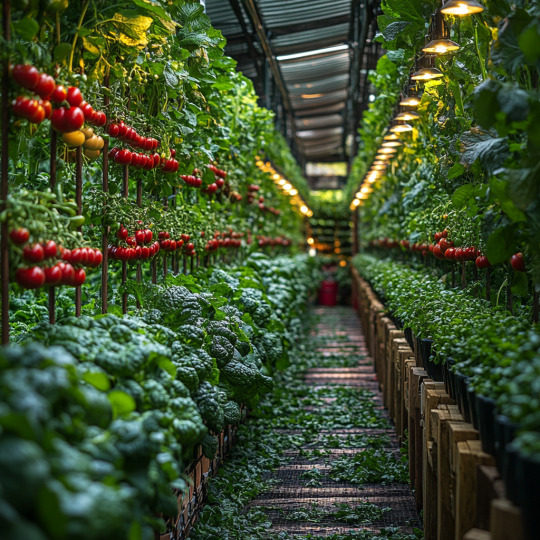
Food: Traditional farming gives way to localized food forests, vertical farms, and regenerative agriculture. Humans embrace sustainable diets, including algae, plant-based proteins, and insects, ensuring everyone has access to nutrient-rich meals. Personalized diets become the norm, helping people optimize their health and fitness.
Water: Decentralized water systems, such as rain-harvesting towers and atmospheric generators, make water scarcity a thing of the past. Capsules enriched with minerals reduce daily water needs, while biofilters ensure clean water for all. Humans adapt to drier conditions, living with less water without compromising health.
Housing: Rising climates inspire flexible housing—floating homes for floods and underground shelters for thermal regulation. Mycelium-based and self-healing materials replace concrete, creating eco-friendly, efficient structures that grow and adapt to different environments.
Education: Lifelong learning is accessible to all, supported by AI tutors and augmented reality tools. Memory-enhancing implants help humans retain knowledge effortlessly. Education shifts to focus on critical thinking, collaboration, and ecological awareness, empowering individuals to tackle global challenges.
Healthcare: Preventative care takes center stage, with wearable tech and genetic mapping offering early detection of diseases. Advances in gene editing make humans resistant to many illnesses, while holistic practices merge with cutting-edge medicine for balanced health care.
Social Equity: A fairer world emerges as resources like food, healthcare, and education become universally accessible. With barriers removed, humans grow taller, healthier, and stronger. Equality fosters unity and eliminates disparities in opportunity and outcomes.
Gender Equality: By 2104, all genders freely pursue any profession without bias or restriction. Social norms embrace inclusivity, creating a society where everyone contributes based on their talents and passions, not traditional roles.
Work & Economy: Automation handles repetitive tasks, allowing humans to focus on creative and interpersonal skills. A skill-sharing economy emerges, emphasizing collaboration and innovation. Work-life balance improves, with people valuing purpose-driven careers.
Electricity: Clean energy systems eliminate pollution from fossil fuels. Solar, wind, and other renewable sources power homes and cities, improving air quality and reducing health risks caused by traditional energy production.
Transportation:
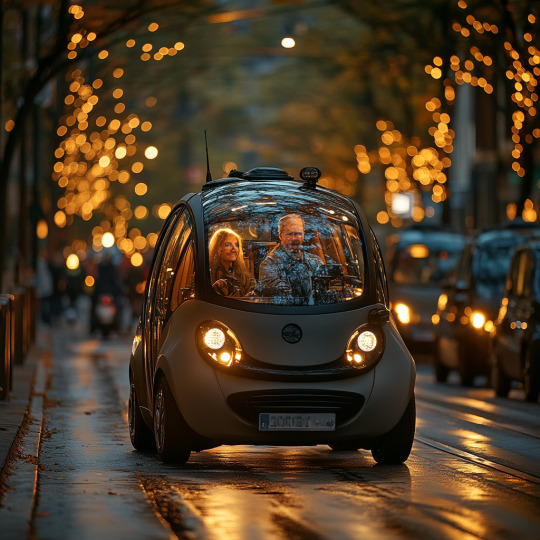
Eco-friendly and efficient transport transforms cities. Electric, shared vehicles reduce traffic, and urban designs prioritize walking and cycling. Travel becomes less about speed and more about sustainability and well-being.
11.Peace & Justice: Global cooperation strengthens mental and physical health. With fair systems in place, people recover quickly from personal and collective challenges, fostering a culture of resilience and harmony.
12.Air Pollution: Advances in urban greenery and clean energy drastically reduce pollution. Humans may also adapt biologically, developing larger lungs or filters in their respiratory systems to survive harsher conditions.
13.Noise Pollution: City noise is mitigated with innovative designs, quieter transport, and soundproof materials. Future humans might develop better hearing control through implants or natural adaptation.
14.Non-Human Life: Conservation efforts protect wildlife and biodiversity, integrating nature into urban areas. Humans adapt to coexist with declining ecosystems, ensuring a balance between artificial and natural environments.
15.Chemical Pollution:

Strides in biotechnology create protective capsules and treatments, shielding humans from harmful chemicals in air, water, and food, while stricter regulations limit their presence altogether.
16. Water Bodies & Supply: Advanced water management restores oceans and rivers, ensuring clean water for all. Marine life rebounds, providing healthier seafood and improving global nutrition.
17.Waste Management: Zero-waste lifestyles and innovative recycling systems eliminate landfill dependency. Waste becomes a resource, fueling new materials and energy, while cities stay clean and disease-free.
18.Public Spaces: Overcrowded cities transform with more green spaces and virtual meeting zones powered by AR and VR. Social hubs encourage fitness, relaxation, and mental well-being, blending technology with nature.
19.Ocean Pollution: Cleaner oceans support thriving marine ecosystems. Humans adapt to avoid consuming toxins, but efforts focus on reversing damage to sustain future generations.
20.Climate Change: Rising temperatures lead to adaptive changes, with darker skin offering sun protection and leaner bodies enhancing heat resistance. In colder areas, better insulation and fat layers ensure survival.
21.Urban Agriculture: Vertical gardens and hydroponics in urban centers make healthy, fresh food readily available. These technologies reduce dependence on processed foods, promoting healthier lifestyles.
22.Gender & Sexuality: Society fully embraces diversity, breaking down barriers of identity. Technology supports fluidity in appearance and self-expression, creating happier, more authentic lives for all.
23.Diversity & Inclusion: By 2104, humanity values diversity as a strength. Inclusive policies ensure equal opportunities, fostering a global community where health, education, and prosperity are universal.
24.Accessibility: Brain-computer interfaces and advanced AI integrate knowledge directly into human cognition. People access information effortlessly, making learning and decision-making faster and more intuitive.
25.Sustainability: Humans live in harmony with nature, embracing circular economies and eco-friendly practices. A focus on preserving natural resources ensures a balance between innovation and environmental stewardship.
#speculative design # human form
0 notes
Text
Exercise 3 (Draft 1)
Headline: Humanity 2104 – What We’ll Look Like and Why It All Starts Today
Today’s headlines on water scarcity, gene editing, and urban farming hint that our lifestyles are shaping the humans of 2104. In this future, both our bodies and minds will adapt to a world redefined by these challenges.

Food
Lab-Grown Meals, Personalized for Health With food insecurity making headlines, scientists today are investing in lab-grown, nutrient-packed foods. By 2104, this tech will allow us to produce meals custom-made for our unique health needs, giving everyone access to optimized diets. Expect humans to look leaner and stronger, built to survive on controlled, high-quality nutrients.
Water
Body Biofilters Against Water Scarcity Water shortages are real, and in response, scientists are testing personal biofilter tech to help our bodies reuse water. In the future, humans may be adapted to need less water and use what we drink more efficiently, with bodies designed to withstand drier environments.
Housing
Adaptable, Eco-Friendly Homes Today’s news about tiny homes and vertical farms hints at a future where our homes are smaller, adaptable, and highly efficient. Living in these compact spaces will make us more agile and adaptable, physically attuned to make the most of our space.
Education
Learning Chips for Fast Knowledge As AI-assisted learning grows, imagine the future: direct neural links that download skills instantly. Classrooms will be replaced by instant knowledge transfer, boosting memory and adaptability, and shaping minds ready to process more information faster than ever before.
Healthcare

Gene Editing for Health Resilience With today’s breakthroughs in gene editing—seen in trials for sickle cell anemia—our future could involve “prevention by design.” Genetically resilient humans will face fewer diseases, potentially living longer and with bodies primed to heal quickly.
Social Equity
Balanced Health, Balanced Society As we work toward equitable access to health and resources, future humans may experience similar levels of wellness. This could lead to less physical disparity, where everyone benefits from equal access to food, health, and education.
Gender & Sexuality
Blurred Lines in a Diverse World Today’s progress in gender equity and acceptance hints at a future where people’s appearances reflect their own choices. Gender expression will be more fluid, with people displaying unique, blended traits that are less defined by traditional boundaries.
Work & Income
Digital Minds, Digital Bodies As remote work reshapes our lives, future humans may evolve physically to adapt to a more sedentary, mentally intensive lifestyle. Softer physiques paired with sharp cognitive skills will define us, with posture evolving for hours of screen time—balanced by tech tools for support.
Air Pollution
Resilient Lungs for Polluted Air As air quality continues to decline in cities, future humans may develop tougher lungs to withstand pollutants, with genetic edits to help us filter particles naturally and avoid respiratory illness.
Noise Pollution
Selective Hearing City noise is here to stay. In response, future humans might have selective hearing capabilities to handle sound pollution, using natural or tech-enhanced abilities to filter out background noise while remaining aware of essential sounds.
Climate Change
Built for Heat With temperatures rising, we may see shifts in skin tone, becoming darker to protect against UV rays. Leaner bodies will help dissipate heat, adapting us to withstand warmer climates—essential in a world dealing with the fallout of climate change.
Urban Agriculture
City Lungs and Fresh Air The rise in urban farming today foreshadows a greener future. Future humans, surrounded by vegetation, will have improved respiratory systems, designed to thrive in oxygen-rich, plant-dense environments.
Diversity & Inclusion
A Global Blend With today’s increasingly interconnected societies, future humans will reflect a blend of genetic diversity. People in 2104 may have a mix of features from around the world—truly embodying the melting pot of global society.
Accessibility
Integrated Tech for All Abilities Today’s assistive tech for mobility and accessibility shows us what’s coming. Exoskeletons, sensory aids, and mobility devices will be fully integrated with our bodies, making it easier for all people to move and interact with their environment.
Sustainability: The Eco-Conscious Body In 2104, humans may evolve to embody sustainability, with efficient metabolisms, minimal water needs, and optimized diets, all designed to conserve resources and reduce waste.
The headlines we see today might just be the first step toward a future where humans adapt in ways we can only imagine—optimized for resilience, connectedness, and harmony with the planet. In 2104, our world will look different, and we’ll look different too.
#speculative design #Human and object relation
0 notes
Text
Exercise 2 : Draft 2
Title: The Last Compass
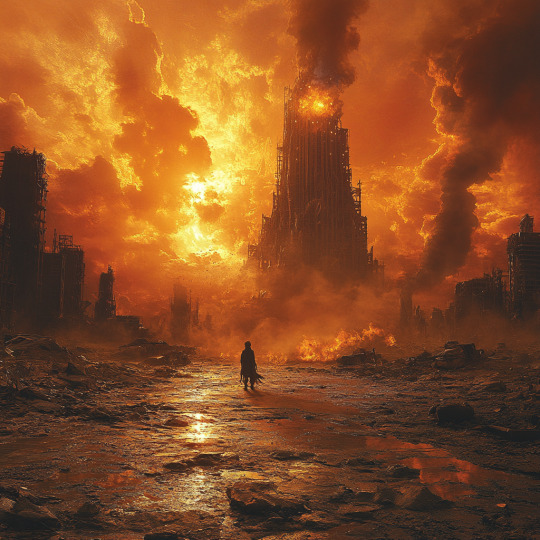

It’s the year 2104, and the world is a barren wasteland of steel, dust, and forgotten ruins. The mega-city of Mugrond, once a towering hub of civilization, has become a shattered skeleton. The skies above are a permanent twilight, choked with ash and pollution, casting the crumbling buildings in a sickly orange hue. The ground beneath is a cracked, parched surface littered with the remnants of wars fought long ago, while rusting remnants of vehicles lie like broken bones in the streets.
Lina, just 12 years old, leads a small group of survivors known as the Wanderers. In this brutal world, there are no parents, no government—just kids, forced to battle each day for food, water, and the faintest glimmer of safety. The wind howls through the skeletal remains of skyscrapers, and the walls of once-bustling markets are now canvases of decay, streaked with rust and charred by past fires.
Lina clutches an old compass, though this compass isn’t the kind her great-grandfather might have used. This is an advanced relic of lost technology—a sleek, transparent sphere suspended in a fluid that shimmers with faint holographic lights. The needle inside is a floating particle, glowing softly, projecting directions onto Lina’s palm like a ghostly map. It doesn’t point north—it points to Sanctus Peak, a mythical place beyond the chaos, where it’s said the war never touched, and life still thrives. For Lina and her group, the compass isn’t just a tool; it’s their last hope.
The Wanderers use old hoverboards they scavenged, outdated but still functional. The boards glide silently over the cracked roads, weaving through the debris with soft hums, their neon lights flickering dimly. They are always on the move, drifting through Mugrond’s ruins like shadows. The sky shifts between ominous shades of purple and grey, and the air is heavy with the smell of burning metal and dust.
But peace is hard to find in Mugrond. The Steelborn, a ruthless group of child soldiers, patrol the streets. These aren’t just kids—they are mechanical hybrids, created by rogue AI systems, their bodies grafted with metal limbs and weapons. Their eyes glow a cold blue, their voices flat and robotic. They move with precision, their mechanical joints clanking against the rusted roads. The Steelborn don’t fight to survive; they fight to conquer. They seek out others like Lina’s group, forcing them to join or die.
Each day is a struggle to stay hidden. The Wanderers creep through the shadows of towering skyscraper remains, their faces lit by the eerie glow of the compass. Once-glass windows, now shattered and covered in moss, flicker in the fading light. The streets echo with distant mechanical footsteps—every corner they turn is another danger. The buildings around them seem to change color with the weather; when the skies dim, the concrete takes on a deep red hue, reflecting the bloodshed that has scarred the city.
One night, while hiding in an old subway station, the cold blue lights of the Steelborn reflect on the tunnel walls. Lina’s heart sinks. The heavy clank of metal footsteps echoes through the underground tunnels, growing louder. They’ve been found.
Fear sweeps through the group like a cold wind. “We have to run!” one of the Wanderers whispers urgently. But they’re trapped. The subway tunnel, lined with rusting pipes and flickering broken lights, stretches ahead, but there’s nowhere left to go. The group grabs whatever they can—a jagged piece of metal, an old pipe, anything to defend themselves. The air is thick with panic, and Lina can feel her hands trembling around the compass.
The Steelborn charge into the station, their robotic limbs slashing through the air with precision. The battle is short and brutal. Lina watches in horror as her friends struggle to hold back the Steelborn’s mechanical strength. One by one, they fall, and Lina feels the weight of failure crushing her chest.
Just when it seems like all hope is lost, the compass in Lina’s hand begins to glow more brightly than ever. The floating particle inside pulses with a strange energy, casting a radiant blue light on the walls of the subway. The needle spins rapidly before pointing down, towards the ground. Lina’s eyes widen in shock. “This way!” she shouts, her voice cutting through the chaos.
They scramble down a side tunnel as the Steelborn close in. The hoverboards spark to life, propelling the group deeper into the subway, their neon trails cutting through the darkness like a comet’s tail. The tunnel winds and twists in eerie silence until, at last, they arrive at a massive, sealed door—its surface smooth and metallic, untouched by time.
Lina jams the compass into a glowing slot on the door. The compass hums, synchronizing with the technology embedded in the door, and with a slow hiss, it slides open. They rush inside just as the Steelborn reach the entrance, the door slamming shut in their faces with a thunderous clang.
Inside, the Wanderers find a hidden bunker, completely intact. The bunker is a relic from a long-forgotten era, its walls gleaming in pristine white. Shelves are lined with food, purified water, and technology that seems alien in its sleek design. Holographic maps flicker in the air, showing forgotten routes through Mugrond. It’s not the sanctuary they dreamed of, but it’s enough to keep them alive for now.
As the group collapses in exhaustion, Lina looks at the glowing compass in her hand. The soft light flickers faintly but remains steady. It had saved them once again. But Lina knows this is just the beginning. The war outside still rages, and the Steelborn won’t stop their hunt.
For now, they have a lifeline. And with this futuristic compass, Lina and her group still have a chance—not just to survive, but to find the sanctuary they’ve longed for. She grips the compass tighter, feeling its pulse of energy, and makes a silent vow. They’ll keep moving, keep fighting—for a future where the children of Mugrond can finally be free from this endless war.
#Child war # Speculative
0 notes
Text
Exercise 2 : Draft 1
Title: The Last Compass


It’s the year 2104, and the world is a wasteland. In the ruins of the mega-city Mugrond, children fight a war left behind by the adults. Lina, just 12 years old, leads a small group of survivors known as the Wanderers. There are no parents, no government—just kids, battling every day for food, water, and safety.
Lina clutches an old compass, the last gift from her great-grandfather, a relic from a time before everything fell apart. But this compass is different. It doesn’t point north—it points to Sanctus Peak, a mythical place where the war never touched. For Lina and her group, this compass is more than a tool; it’s their only hope of finding peace in a world full of chaos.
But peace is hard to come by in Mugrond. The Steelborn, a ruthless group of child soldiers controlled by AI, rule the streets. These kids are more machine than human, with metal limbs and cold, dead eyes. They hunt down others, forcing them to join or perish. Lina’s Wanderers are always on the run, scavenging for food, listening for the metal clank of the Steelborn patrols.
Each day is a fight to stay hidden. The Wanderers creep through abandoned streets, past buildings crumbling from old bombings, always moving, always following the compass. But one night, while hiding in an old subway station, Lina’s heart sinks. The sound of metallic footsteps echoes through the tunnels—the Steelborn have found them.
Fear grips the group. “We have to run!” someone whispers, but there’s nowhere left to go. They grab whatever they can—a broken pipe here, a jagged piece of metal there. It’s all they have to defend themselves. Lina’s hands shake as she tightens her grip on the compass, willing it to save them.
The Steelborn charge, their robotic limbs slashing through the air. Lina’s group fights back with everything they’ve got, but it’s not enough. One of her friends falls, then another. Panic fills Lina’s chest, the horror of watching her group be torn apart too much to bear. She screams for them to hold on, but it feels hopeless.
And then—the compass glows. The soft light spills out from her hand, and suddenly, the needle spins wildly before pointing downward. Lina’s eyes widen. “This way!” she shouts, her voice filled with new energy. She dashes into the subway tunnel, leading her group deeper underground, the Steelborn chasing close behind.
They run through the dark, the tunnel twisting and turning until, at last, they come to a massive metal door. Lina jams the compass into a slot, and the door creaks open. They scramble inside just as the Steelborn reach them, the door slamming shut in their faces.
Inside, they find a hidden bunker, untouched by time. Shelves of food, clean water, old weapons—it’s not the sanctuary they hoped for, but it’s a lifeline. As the group catches their breath, Lina looks at the glowing compass in her hand. It had saved them, but she knows this is only a small victory. The war outside still rages, and the Steelborn are relentless.
But for now, they are safe. And with this compass, they still have a chance—a chance not just to survive, but to find the sanctuary they dream of. For the first time in a long while, Lina feels hope. She grips the compass tighter and promises herself and her group that they’ll keep fighting—for freedom, for peace, for a future beyond the endless war.
#Speculative #Child war
0 notes